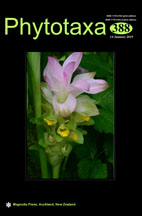Abstract
The pollen morphology of nine Limonium species (Plumbaginaceae), occurring along the coastal saline habitats of Turkey, are investigated. Pollen slides were prepared according to the methods of Wodehouse (W) and Erdtman (E) and examined using light microscope. Then pollen grains were placed directly to stubs and covered by gold-palladium mixture for scanning electron analyses. Pollen grains are usually tricolpate, rarely syncolpate, dicolpate, tetracolpate, and pentacolpate. Shape of pollen grains are varing from prolate-sphaeroidal to oblate. Medium to large sized pollen grains of Limonium has long and wide colpi with distinct margins, and acute terminals. Exine structure is semi-tectate and exine ornamentation is microreticulate-microechinate or reticulate-microechinate. Pollen grains of Limonium species have shown variation on colpus type, shape and exine ornamentation. Examined Limonium species can be seperated in three unformal groups according to the palynological features, and their pollen definitions have been done. Besides, a taxonomic key was proposed for quick and accurate identification based on different palyno-morphological characters.

